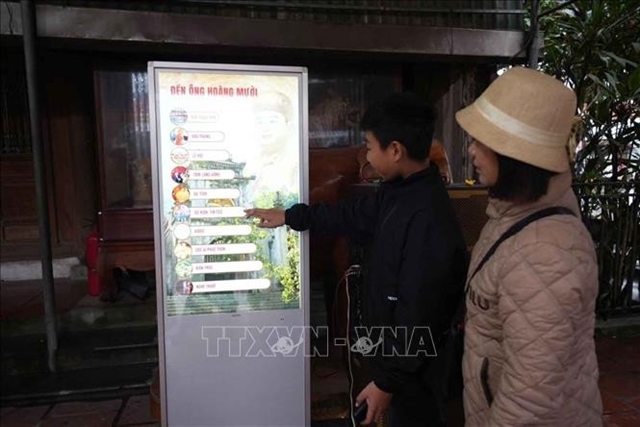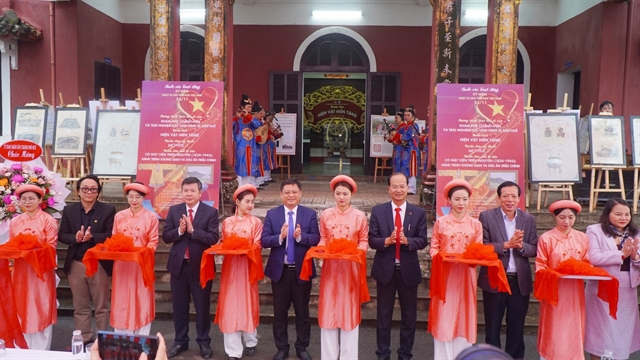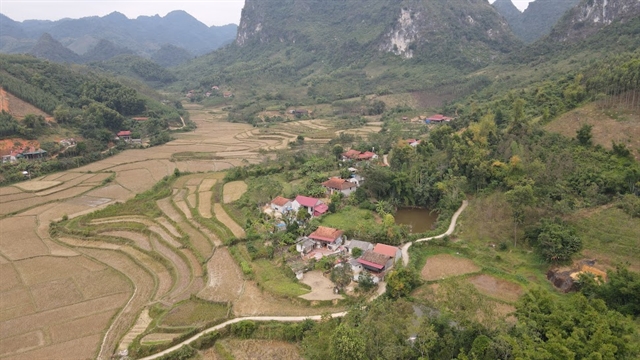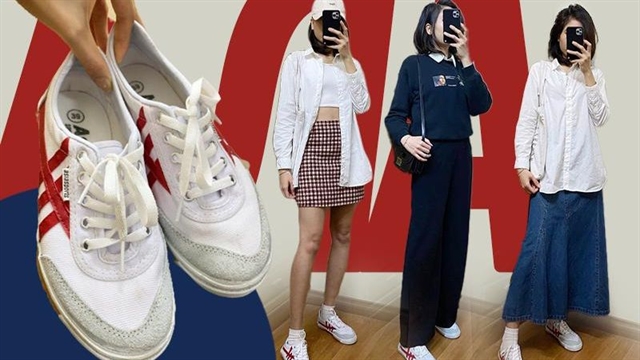 Society
Society
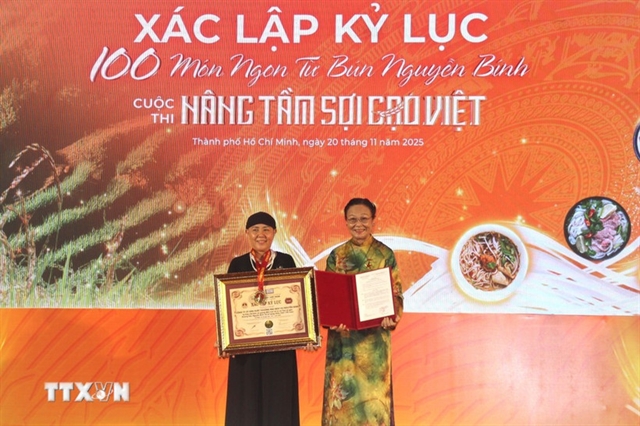
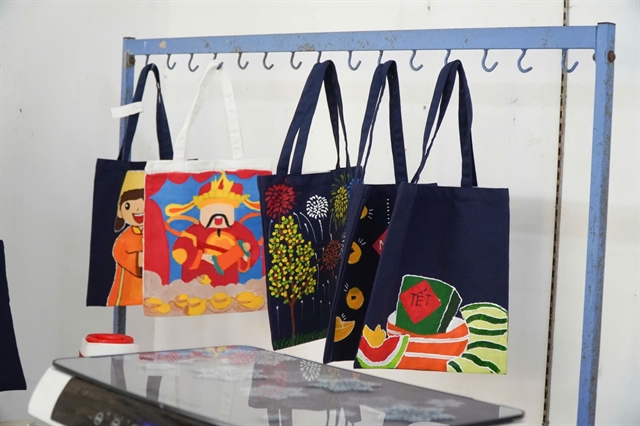 |
| Old used bags are renewed by children with disabilities through drawings with vivid, cheerful images associated with the traditional Tết holiday. — VNA/VNS Photo Đan Phương |
HCM CITY — Instead of being thrown away, unused fashion products like clothes, shoes, backpacks, hats, accessories and stuffed animals will be remade into new items by children with disabilities as part of a project.
The children will turn them into unique handmade fashion products, adding economic value and at the same time reducing environmental waste.
With goals of combatting fashion waste, promoting sustainable and environmentally friendly consumption and supporting the disabled population in Việt Nam in HCM City.
The project was launched by the Green Fashion Social Enterprise Joint Stock Company in coordination with the Việt Nam Fund for Disabled Children, the HCM City Association for the Protection of Disabled People and Orphans and the HCM City Vocational Education Centre for the Disabled and Orphans.
Nguyễn Tuấn Khởi, chairman of Green Fashion Social Enterprise Joint Stock Company, said that the fashion industry is currently considered the second largest polluting industry in the world, second only to the oil industry.
Statistics show that on average, about 85 per cent of textiles are dumped in landfills each year, equivalent to a truckload of clothes being burned or thrown away every second.
The industry is also responsible for 20 per cent of the world's total wastewater, releasing about 70 million cubic metres of wastewater per year.
In Việt Nam, the Việt Nam Textile and Apparel Association (VITAS) has stated that the textile and garment industry emits about five million tonnes of carbon dioxide per year.
Wet processing in textile production – washing, rinsing, pre-treatment, dyeing and finishing – consume large amounts of water resources.
Faced with this reality, domestic textile and garment enterprises are stepping up investment and implementing practical solutions for a greener, more sustainable future.
Digitalisation and greening are seen as inevitable trends for the textile and garment industry to develop sustainably and in an environmentally friendly manner.
Now, the Việt Nam Fashion Bank will extend the life cycle of wasted or unused fashion products. Instead of being thrown away and becoming a burden on the environment, these products will be collected, classified and redistributed to those in difficult circumstances.
Khởi said: “The bank will be a model to reduce waste and protect the environment, aiming to build a sustainable economy, while creating new value for fashion products."
“Through this model, we hope to spread a positive message to the community and the fashion industry,” he added.
As part of the “Fashion of Hope” project, participants not only focus on reusing fashion products, but also propose practical solutions to reduce waste, protect the environment and create new opportunities for the disadvantaged, especially those with disabilities.
“We believe that every small action will contribute to building a sustainable economy, where every item can find new value,” said Khởi.
The project aims to support people with disabilities to integrate and develop in the community.
Through vocational training and job creation, the project helps people with disabilities and disadvantaged people create useful recycled fashion products and handmade items, giving them a way to make an income.
This is not only an opportunity for people with disabilities to develop vocational skills, but also a way to build an independent life and contribute to the sustainable development of society.
Dương Thị Bích Diệp, chairwoman of the Board of Directors of the Việt Nam Fund for Children with Disabilities, said that the “Fashion of Hope” project not only provided essential fashion products for children and people with disabilities, but also helped raise public awareness about the issue of waste in the fashion industry.
“This is a meaningful initiative and very consistent with the fund’s goal of providing opportunities and support for people with disabilities and poor children,” she said.
The Việt Nam Fund for Children with Disabilities will coordinate with the Việt Nam Fashion Bank and the HCM City Association for the Support of Disabled People and Orphans to organise a garment training course for the disabled at the HCM City Vocational Education Centre for Disabled People and Orphans.
They will also connect with partners to put products made by disadvantaged people for sale. — VNS

